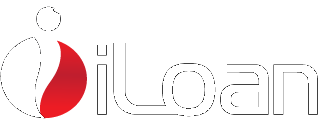FHA vs. USDA Home Loans: Understanding the Differences
Introduction
When it comes to home financing, two popular government-backed loan options are the Federal Housing Administration (FHA) loans and the United States Department of Agriculture (USDA) loans. Both offer unique benefits and cater to different segments of homebuyers. In this blog, we’ll dive deep into the differences between FHA and USDA home loans to help you make an informed decision.
Ready to apply for the FHA or USDA home Loan? Call today (888)416-4805 or Apply Online.
What are FHA Loans?
FHA loans are a type of mortgage insured by the Federal Housing Administration. They are designed to help lower-income and first-time homebuyers purchase homes.
Key Features of FHA Loans:
- Minimum Down Payment: FHA loans require a minimum down payment of 3.5%.
- Credit Score Flexibility: Borrowers with credit scores as low as 580 may qualify.
- Mortgage Insurance: Requires both upfront and annual mortgage insurance premiums.
- Property Standards: The home must meet certain safety, security, and structural integrity standards.
What are USDA Loans?
USDA loans are mortgages backed by the United States Department of Agriculture. They are intended to promote homeownership in rural and some suburban areas.
Key Features of USDA Loans:
- No Down Payment: USDA loans offer 100% financing, meaning no down payment is required.
- Credit Requirements: While credit score requirements are more flexible, USDA loans tend to require a slightly higher credit score than FHA loans.
- Income Limits: Borrowers must meet certain income limits, which vary by region and household size.
- Geographic Restrictions: Eligibility is limited to certain rural and suburban areas.
Comparing FHA and USDA Loans
- Eligibility Requirements:
- FHA loans are more accessible to a broader range of borrowers.
- USDA loans are restricted to individuals purchasing homes in designated rural and some suburban areas and have specific income limits.
- Down Payment:
- FHA loans require at least a 3.5% down payment.
- USDA loans offer 100% financing with no down payment.
- Mortgage Insurance:
- FHA loans require an upfront mortgage insurance premium and an annual premium.
- USDA loans require a guarantee fee, both upfront and annually, which is typically lower than FHA’s mortgage insurance.
- Interest Rates:
- Both FHA and USDA loans typically offer competitive interest rates, but the exact rate will depend on the borrower’s creditworthiness and other factors.
- Property Requirements:
- FHA loans have certain property standards that must be met.
- USDA loans also have property eligibility requirements, focusing on the location being in a qualifying area.
Conclusion
Choosing between an FHA and USDA loan depends on your individual circumstances, including your financial situation, the location of the property, and your creditworthiness. FHA loans are generally more accessible and have fewer geographical restrictions, making them suitable for a wide range of borrowers. On the other hand, USDA loans are ideal for those looking to buy in rural areas and can benefit from zero down payment and potentially lower mortgage insurance costs.
Remember, it’s always advisable to consult with a mortgage advisor to understand which loan option best suits your needs and to help navigate the home buying process.
Ready to apply for the FHA or USDA home Loan? Call today (888)416-4805 or Apply Online.

